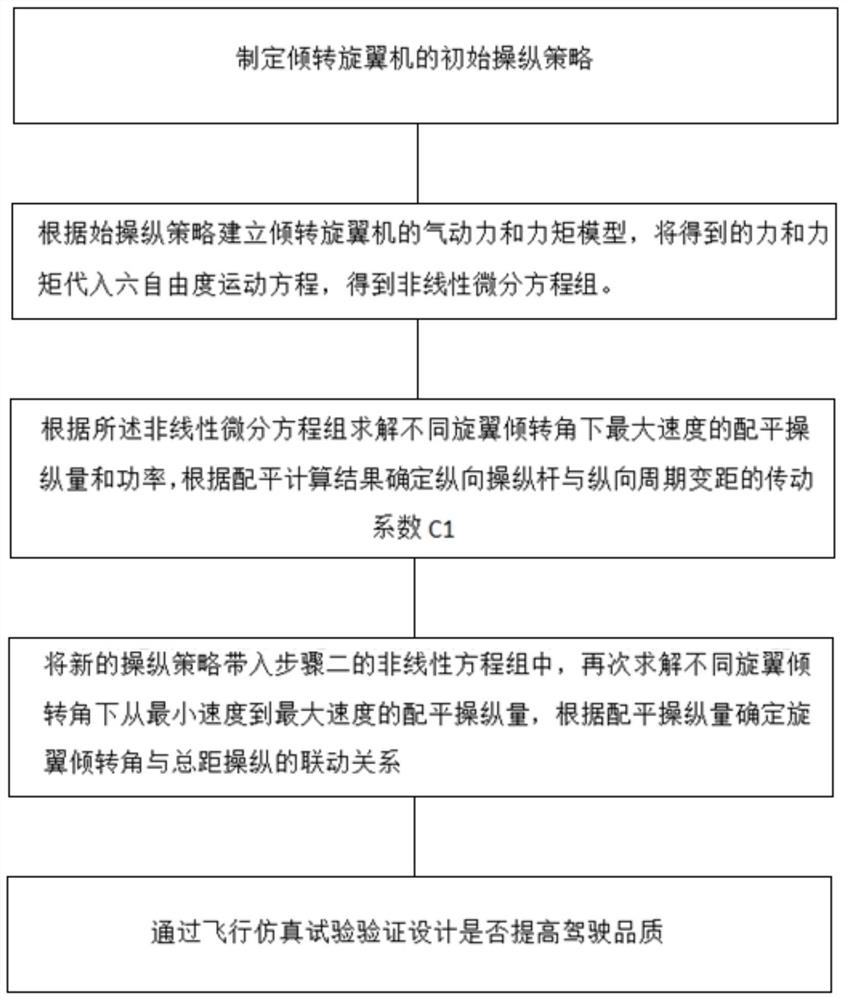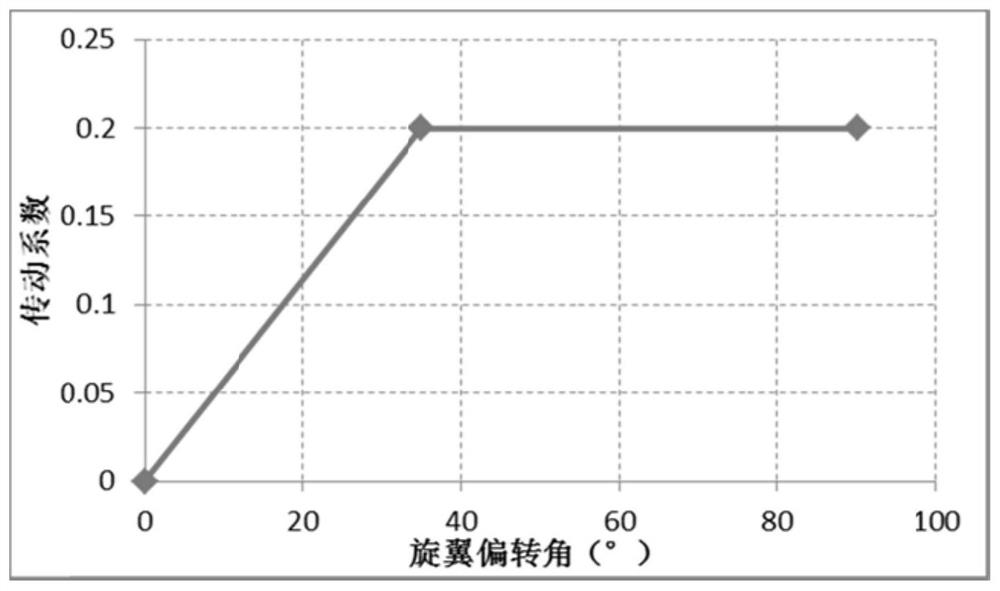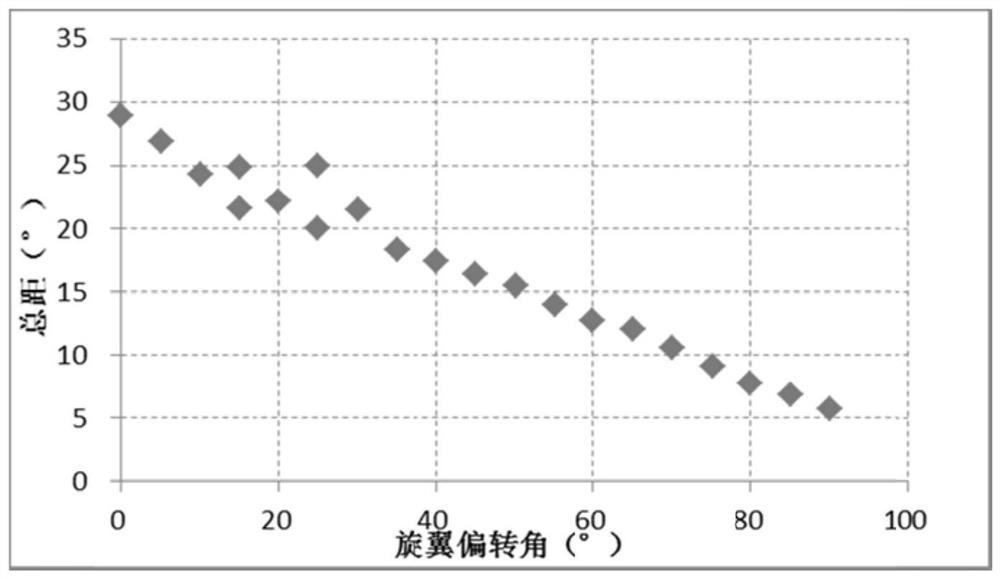Tilt-rotor helicopter control decoupling design method
A technology of tilt rotor and design method, which is applied in the field of helicopters, can solve problems such as redundancy of control rudder surfaces of tilt rotor helicopters, and achieve the effect of smooth transition and reduction of control load
- Summary
- Abstract
- Description
- Claims
- Application Information
AI Technical Summary
Problems solved by technology
Method used
Image
Examples
Embodiment Construction
[0028] The technical scheme adopted in the present invention is a design method for the longitudinal maneuvering strategy of a tilt-rotor helicopter, and the process is shown in the attached figure 1 , with the following steps:
[0029] The first step is to formulate the initial longitudinal control strategy of the tiltrotor, including the change of the longitudinal joystick, the tilt angle of the rotor, and the change of the total pitch of the rotor with the tilt angle of the rotor.
[0030] Obtain the initial control range of the rotorcraft, including the initial control range [a1, b1] of the longitudinal cyclic pitch change and the initial control range [a2, b2] of the elevator, then the transfer coefficient of the longitudinal cyclic pitch change C1 is (a1-b1) / N, the transfer coefficient C2 of the elevator is (a2-b2) / N; where the value of N can be the total travel of the joystick, for example, it can be 100.
[0031] Then the change of the longitudinal joystick of the ro...
PUM
 Login to View More
Login to View More Abstract
Description
Claims
Application Information
 Login to View More
Login to View More - R&D
- Intellectual Property
- Life Sciences
- Materials
- Tech Scout
- Unparalleled Data Quality
- Higher Quality Content
- 60% Fewer Hallucinations
Browse by: Latest US Patents, China's latest patents, Technical Efficacy Thesaurus, Application Domain, Technology Topic, Popular Technical Reports.
© 2025 PatSnap. All rights reserved.Legal|Privacy policy|Modern Slavery Act Transparency Statement|Sitemap|About US| Contact US: help@patsnap.com



